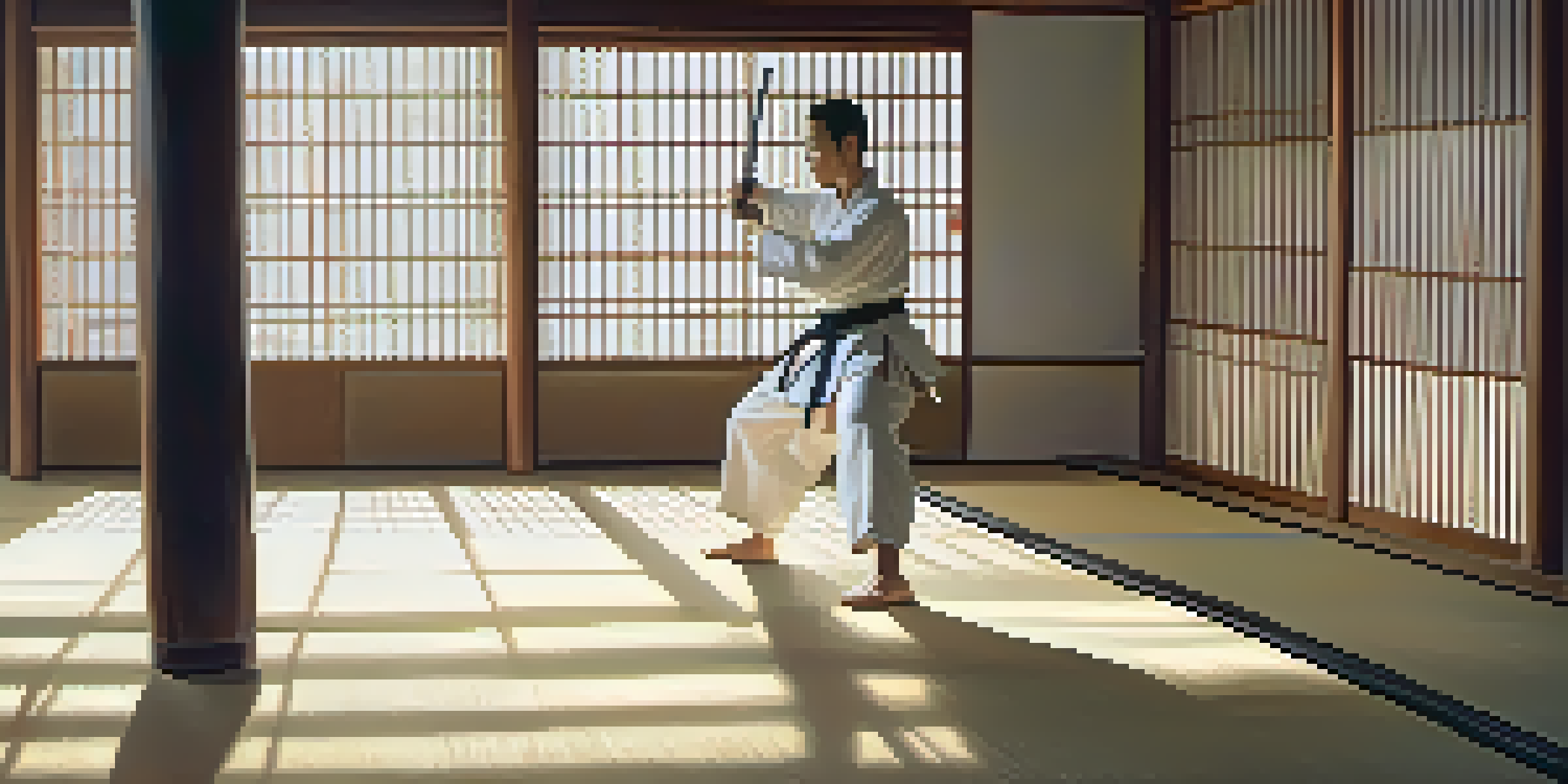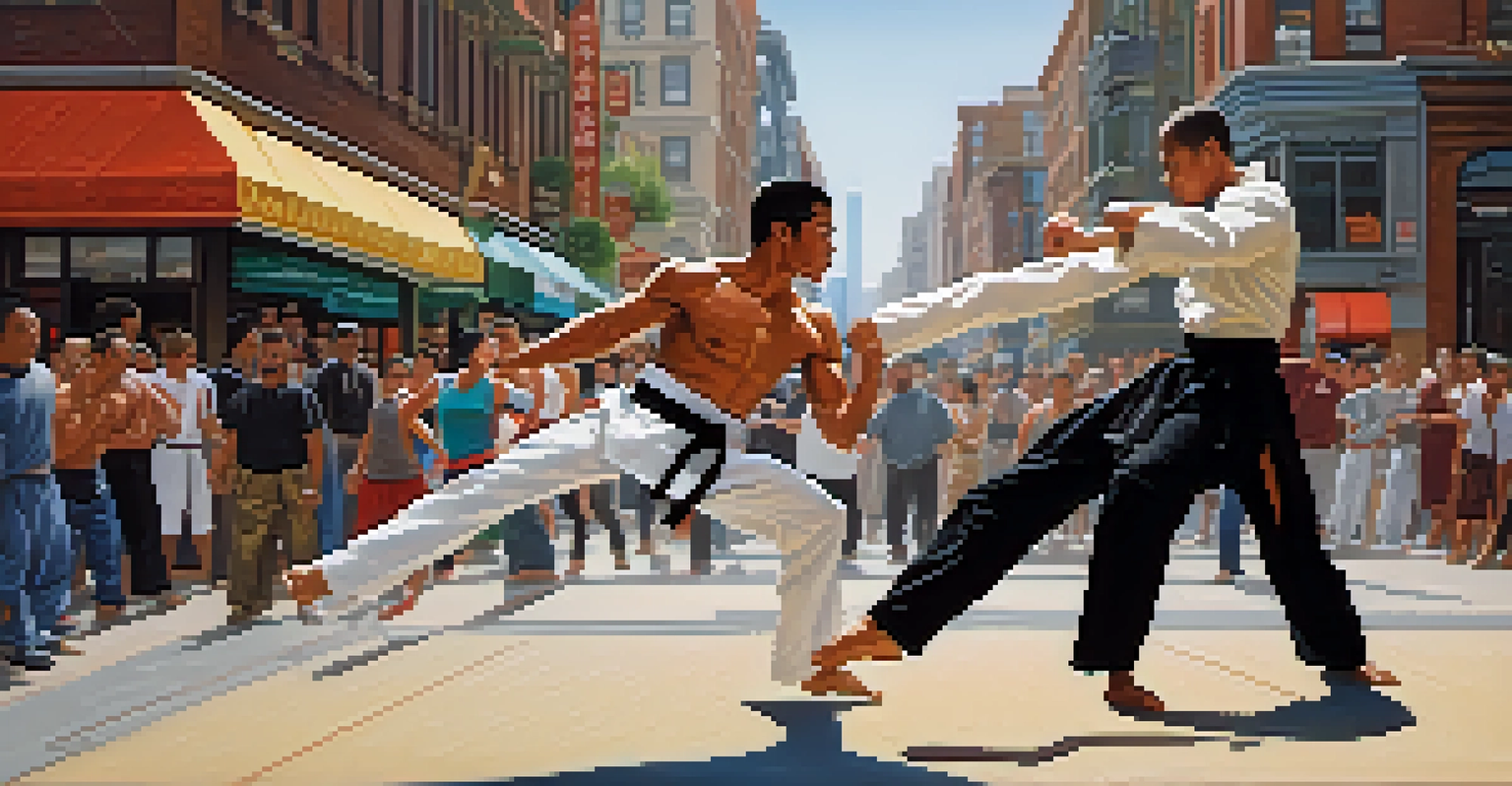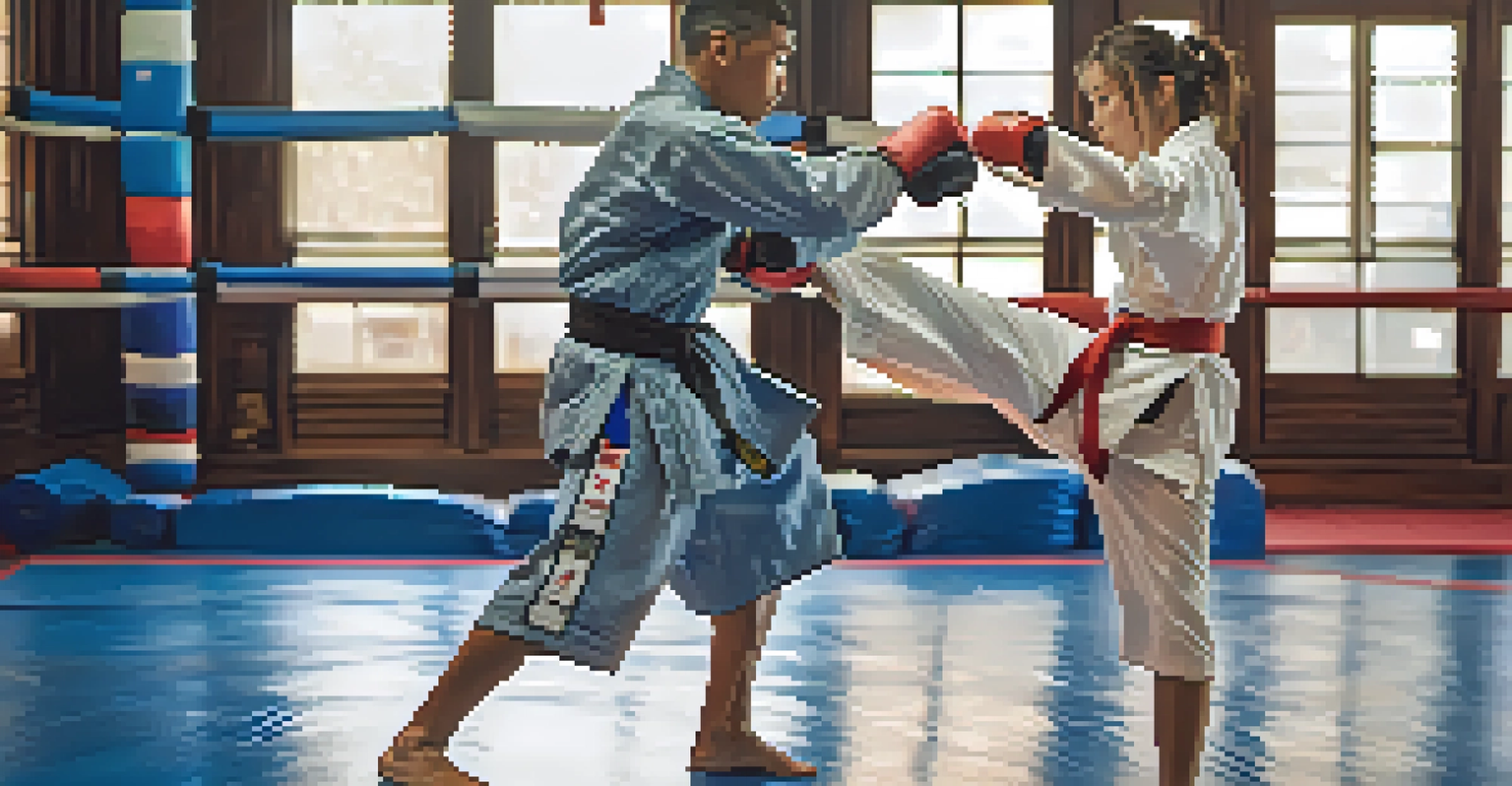Combining Martial Arts Techniques for Real-Life Scenarios

Understanding the Basics of Martial Arts Techniques
Martial arts encompasses various techniques that focus on self-defense, discipline, and physical fitness. Each style, whether it's karate, judo, or Brazilian jiu-jitsu, offers unique methods and philosophies. Understanding these basics is crucial as it lays the foundation for combining techniques effectively in real-life scenarios.
The ultimate aim of martial arts is not having to use them.
One of the key aspects of martial arts is adaptability. For instance, a karate practitioner's strikes can be effectively used in close-range situations, while a judo expert can leverage their grappling skills to neutralize an opponent. Recognizing how these techniques can complement each other is vital for developing a comprehensive self-defense strategy.
Related Resource
Moreover, practicing these techniques regularly not only improves physical ability but also builds confidence. When faced with a potential threat, having the knowledge of various martial arts techniques can provide a sense of security and readiness.
The Importance of Situational Awareness
Situational awareness is the ability to perceive and understand your surroundings, which is essential in martial arts. By being aware of your environment, you can identify potential threats and avoid dangerous situations altogether. This is often the first line of defense, sometimes even more critical than any physical technique.

For example, when walking in public, scanning the area for suspicious behavior or potential escape routes can make a significant difference. If you notice someone following you, you can take proactive measures, such as altering your route or seeking help, rather than waiting for a confrontation.
Adaptability is Key in Self-Defense
Martial arts techniques should be adaptable, allowing practitioners to seamlessly switch between striking and grappling based on the situation.
Training in martial arts often includes drills that enhance situational awareness. Practitioners learn to read body language and anticipate movements, skills that are invaluable not only in combat but also in daily life.
Combining Striking and Grappling Techniques
Striking and grappling are two fundamental aspects of martial arts that can be effectively combined. Striking techniques, like punches and kicks, are great for maintaining distance and creating openings, while grappling skills can control an opponent when the situation escalates. Understanding when to switch between these techniques is key to effective self-defense.
In the middle of difficulty lies opportunity.
For instance, if a confrontation begins with verbal aggression, striking techniques may help to defuse the situation. However, if it turns physical, transitioning to grappling techniques can help you gain control and neutralize the threat. This adaptability can be the difference between getting harmed and staying safe.
Related Resource
Additionally, many martial arts styles, such as mixed martial arts (MMA), emphasize the importance of integrating both striking and grappling. Training in a diverse range of techniques prepares you for various scenarios, ensuring that you're not limited to one approach.
Leveraging the Environment in Self-Defense
One of the underrated aspects of self-defense is utilizing your surroundings to your advantage. Whether it's using a wall for support during a grappling maneuver or employing nearby objects as improvised weapons, understanding how to leverage your environment can turn the tide in a dangerous situation. This skill set is often cultivated through situational training.
For example, if you're confronted in a narrow alley, you might use the walls to limit your opponent's movements while creating space for your strikes. Alternatively, if there are objects like a backpack or a stick nearby, they can serve as effective tools for defense or distraction.
Situational Awareness Matters
Being aware of your surroundings can help identify potential threats and avoid dangerous situations before they escalate.
Practicing these concepts in various environments during training can enhance your ability to respond naturally in real-life scenarios. The more familiar you are with using your surroundings, the more instinctive and effective your response will be.
The Role of Mental Fortitude in Martial Arts
Mental fortitude is just as crucial as physical prowess in martial arts. The ability to stay calm under pressure can significantly impact your decision-making in a self-defense situation. Practicing mindfulness and visualization techniques can help develop this mental strength, allowing you to react effectively when the stakes are high.
For instance, many martial artists practice breathing exercises to maintain composure during sparring sessions. This practice translates well into real-life scenarios, where panic can cloud judgment. The calmer you remain, the better your ability to assess the situation and choose the appropriate techniques to employ.
Related Resource
Additionally, mental preparation also involves accepting that not every confrontation can be resolved with physical techniques. Sometimes, the best response is to de-escalate and walk away. Cultivating a mindset focused on conflict resolution is invaluable in martial arts and life.
Training for Real-Life Scenarios: Practical Tips
To effectively combine martial arts techniques for real-life situations, training should include realistic scenarios. This includes sparring with partners who simulate various types of confrontations, which helps prepare you for the unpredictability of actual encounters. Focus on drills that challenge you to think on your feet and adapt your techniques.
Another practical tip is to incorporate situational drills into your training routine. For example, practicing how to deal with an opponent who grabs you from behind or understanding how to escape a hold can build muscle memory and confidence. These exercises make your training more applicable to real-world situations.
Mental Fortitude Enhances Skills
Developing mental strength through techniques like mindfulness can significantly improve decision-making during high-pressure self-defense situations.
Moreover, seek feedback from instructors and peers during practice. They can provide insights on your technique and suggest improvements, helping you refine your skills further. The more you learn and adapt, the more prepared you'll be for any situation.
Staying Safe: Knowing When to Walk Away
While martial arts training equips you with valuable self-defense skills, it's essential to recognize that not all confrontations need to escalate to physical conflict. Knowing when to walk away is a crucial aspect of personal safety. Often, avoidance is the best strategy to prevent harm.
For example, if you find yourself in a heated argument, using de-escalation techniques—like speaking calmly and respectfully—can help diffuse tension without resorting to physical confrontation. Understanding that you have the power to choose peace over conflict is a significant lesson from martial arts.

Additionally, awareness of your surroundings can help you identify potentially dangerous situations early on. If you sense a confrontation brewing, leaving the area or seeking help can be the wisest choice. Empowering yourself with this knowledge not only enhances your safety but also reinforces the values of martial arts.